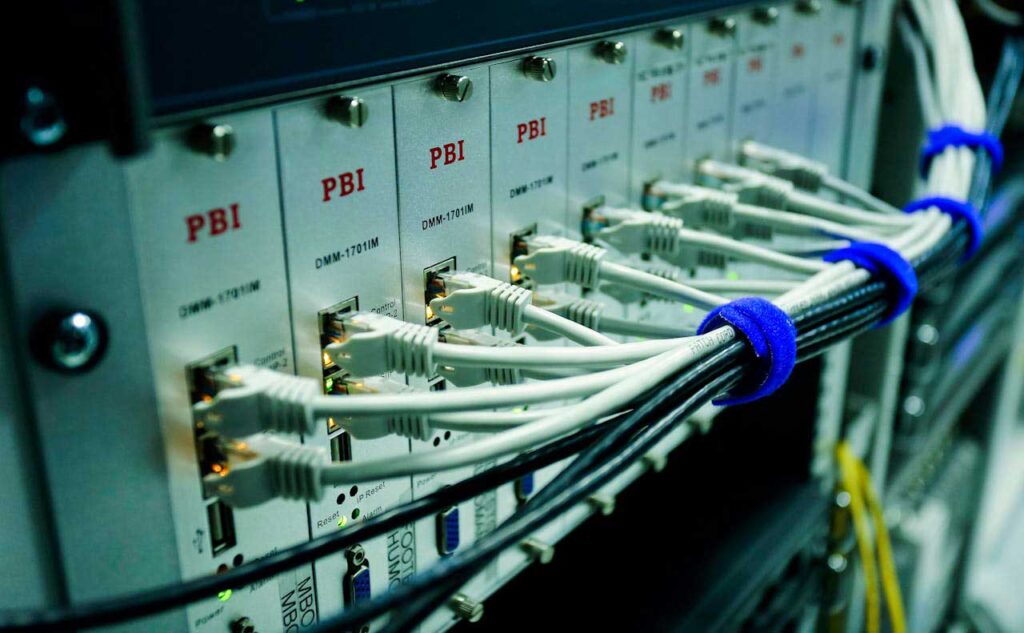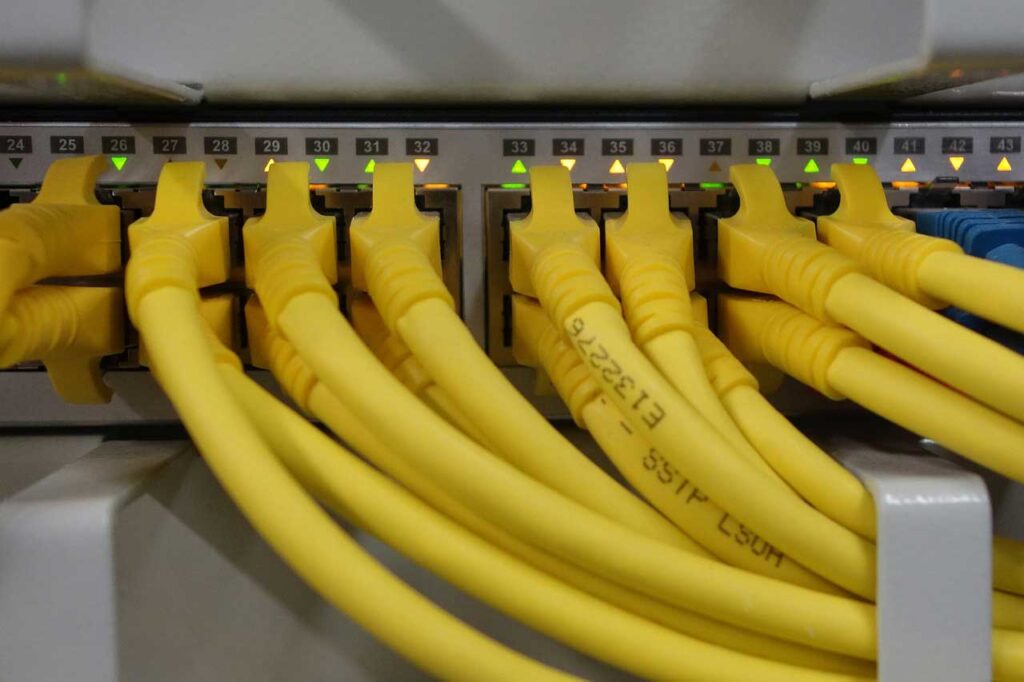Introduction to Structured Cabling
Communication is the bedrock of modern life, enabling us to connect instantly across vast distances. The ability to make video calls, send messages, and share information in real-time has transformed how we interact. Among the most significant advancements in communication technology is structured cabling. This approach focuses on designing a systematic infrastructure that organizes and manages cables and connectivity components efficiently. By providing a clear framework for telecommunications, structured cabling enhances the reliability and effectiveness of communication systems in any building.
The Analogy: An Organized Library

Consider a library where books are haphazardly scattered. Finding a specific book in such chaos would be a frustrating and time-consuming task. Now, imagine the same library with books meticulously sorted by genre and arranged alphabetically. Accessing information would be streamlined, efficient, and error-free. This analogy highlights how organization plays a critical role in communication. Just as a well-organized library simplifies information retrieval, structured cabling organizes cables and components to facilitate smoother and more reliable communication. This structured approach prevents confusion, reduces errors, and enhances overall system performance.
The Impact of Structured Cabling
Structured cabling has revolutionized telecommunications by introducing a methodical approach to wiring and connectivity. Instead of dealing with a tangled mess of cables, structured cabling organizes these into a well-defined system. This organization minimizes physical interference between cables and ensures that data transmission remains uninterrupted and accurate. The system is designed to support future expansions and upgrades with minimal disruption, making it a flexible and long-term solution. In cities like Atlanta, structured cabling has become a preferred choice for businesses and institutions due to its ability to offer reliable and efficient communication solutions.
Benefits of Structured Cabling

Traditional wiring methods often lead to cluttered and disorganized setups, where cables are directly connected to hardware and plugs, creating confusion and potential issues. Structured cabling addresses these problems by routing cables through a structured infrastructure, thus maintaining a clean and organized environment. This system enhances space utilization, simplifies management, and improves the overall performance of communication systems. With structured cabling, issues such as signal interference and system downtimes are minimized, allowing for seamless operation and easier troubleshooting. Custom Cabling Solutions LLC provides expert services in upgrading and implementing structured cabling, ensuring that your communication systems are organized, efficient, and ready to meet future demands.
Frequently Asked Questions
What is Structured Cabling?
Structured cabling is a standardized approach to cabling systems that involves organizing and managing cables and components in a structured manner. It provides a clear framework for installing, maintaining, and upgrading network infrastructure, ensuring efficient data transmission and reliable communication.
Why is Structured Cabling Important?
Structured cabling is crucial because it improves organization, reduces clutter, and enhances system performance. It simplifies troubleshooting, supports future upgrades, and ensures that data and voice communications are transmitted efficiently and accurately. By creating a systematic approach to cabling, it also increases the lifespan of your network infrastructure.
What are the Key Components of a Structured Cabling System?
A structured cabling system typically includes several key components:
Cabling: The physical cables used to connect devices.
Patch Panels: Panels where cables are terminated and connected to other devices.
Racks and Enclosures: Structures that house and organize networking equipment.
Cable Management: Tools and accessories used to organize and route cables neatly.
Horizontal and Vertical Cabling: Cabling that runs between floors (vertical) and within a floor (horizontal).
How Does Structured Cabling Differ from Traditional Cabling?
Traditional cabling methods often involve a direct connection between devices, leading to a tangled mess of cables and potential confusion. Structured cabling, on the other hand, uses a systematic approach to organize and manage cables through designated pathways and components. This results in a cleaner, more efficient setup that is easier to maintain and upgrade.
What are the Benefits of Implementing Structured Cabling?
Implementing structured cabling offers several benefits:
Improved Organization: Reduces cable clutter and simplifies management.
Enhanced Performance: Minimizes interference and optimizes data transmission.
Easier Maintenance: Facilitates troubleshooting and repairs.
Scalability: Allows for easy expansion and upgrades.
Space Efficiency: Maximizes use of available space and improves airflow.
What Types of Cables are Used in Structured Cabling?
Structured cabling systems use a variety of cables, including:
Category 5e (Cat 5e): Used for Ethernet connections.
Category 6 (Cat 6): Offers higher performance for faster networks.
Category 6A (Cat 6A): Provides even greater performance and reduced crosstalk.
Fiber Optic Cables: Used for high-speed data transmission over long distances.
How Do I Know if My Business Needs Structured Cabling?
If your business requires a reliable, scalable, and organized network infrastructure, structured cabling is a beneficial solution. It is particularly important for businesses experiencing growth, those with complex network requirements, or those seeking to improve their current setup. An assessment by a cabling professional can help determine if structured cabling is the right choice for your needs.
How Long Does it Take to Install Structured Cabling?
The installation time for structured cabling varies based on the size and complexity of the network. Typically, a professional installation can range from a few days to several weeks. Factors influencing the timeline include the number of workstations, the size of the building, and any special requirements.
What is the Cost of Structured Cabling?
The cost of structured cabling depends on several factors, including the size of the installation, the type of cabling used, and any additional components required. While the initial investment may be higher compared to traditional cabling methods, the long-term benefits of improved organization and scalability often outweigh the costs. It’s best to get a detailed quote from a cabling professional to understand the specific costs for your project.
How Can I Maintain My Structured Cabling System?
Maintaining a structured cabling system involves regular inspections, cleaning, and management of cables. Ensuring that cables are properly organized and avoiding physical damage are key to maintaining system performance. Periodic checks by a professional can help identify and address any potential issues before they affect your network.

